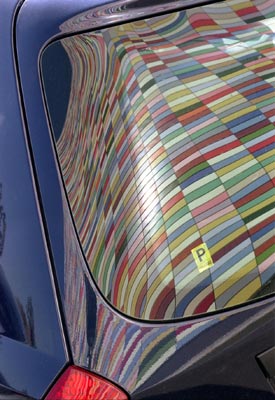860-880 Lake Shore Drive Renovation









Chicago, Illinois
Original Completion Date: 1951
Restoration Completion Date: 2009
Client: 860-880 Condominium Association
860-880, which was built between 1949 and 1951, consists of two 26-story, exposed steel and glass apartment towers set at right angles on an irregular travertine plaza.
Based on ideas and theories Mies had been perfecting since his earliest days as an independent architect in 1920s Berlin, the buildings redefined highrise living for the post-war generation.
“They were the most radical buildings of their time,” said Ron Krueck. “They’re light and delicate and surprisingly sexy. They also prove that – contrary to what many people believe -- it’s not so easy to design a glass box.”
(A link to “Restoring Modernism,” a short YouTube video of Ron Krueck discussing Mies’ architectural legacy as well as the impact of 860-880 Lake Shore Drive: http://www.youtube.com/watch?v=bdJD2hKveHg)
860-880, which is both a local and national landmark, is located just north of Chicago’s Loop central business district and steps away from Lake Michigan.
Many architects and critics believe 860-880 is the closest Mies ever came to achieving his goal of less is more “skin and bones” architecture.
According to the American Institute of Architects’ “Guide to Chicago,” “No other building(s) by Mies had as immediate or strong an impact on his American contemporaries, and the influence of these structures was to pervade much of modern architecture.”
“There’s not a lot to them,” said Mark Sexton. “They’re mainly just steel and glass used in the most efficient way possible. By contrast, buildings today often have layer upon layer of materials.”
In addition to more than half a century of normal wear and tear, the buildings had endured several restoration attempts over the years. The problems included corrosion of the buildings’ exposed steel frame, failure of the lobby glazing system and extensive cracking and discoloration of the travertine plaza.
There were also aesthetic issues. The original frosted glass in the lobby had been replaced in the early 1980s by a laminate system with a translucent interlayer that created an historically inaccurate aquamarine tint.
The restoration included recoating the steel frame facade and cleaning the original aluminum windows. In addition, new sandblasted glass in the lobby recreated the soft, velvety glow of the original.
Finally, the plaza was rebuilt, a process that included replacing the original travertine slabs, designing a new drainage system and recreating the original plaza lighting scheme.
Designed to take advantage of a 2008 tax credit, the project began in the summer of 2007 and was completed in December. The cost was $9 million.
Krueck & Sexton began work in the summer of 2007 and finished in December of 2009. The total cost of the project was $9 million.
The problems included corrosion of the building’s exposed steel frame, failure of the lobby glazing system and extensive cracking and discoloration of the travertine plaza.
860-880 is the third and largest Mies commission Krueck & Sexton, a firm more noted for its original work, has completed in recent years.
The other two – all are in Chicago – are Crown Hall on the campus of the Illinois Institute of Technology and the School of Social Service Administration at the University of Chicago.
“One of the things I’ve learned from restoring these buildings is that, for Mies, there was never a final answer,” said Krueck. “He was always interested in what else could happen, what the other design possibilities might be. What’s fascinating is to watch his thinking evolve over the course of a project. At 860-880, for example, the early sketches show a scalloped exterior with large bay windows. This eventually changes to what is there today. There’s also a continual process of refinement in terms of the massing, the enclosures at the bottom and the way the plazas are laid out.”
Krueck & Sexton Architects (ksarch.com) was founded by architects Ronald Krueck and Mark Sexton in 1991 and is a multi-disciplinary firm with a varied portfolio. In addition to its innovative Mid-Century restoration and renovation practice, it has completed numerous award-winning civic, commercial and residential projects. The firm’s Spertus Institute Building on Michigan Avenue in Chicago received three AIA awards in 2008, including a Distinguished Building Award. The firm currently is working on a 25 acre expansion of Grant Park in downtown Chicago, the highlight of which will be a new home – also designed by Krueck & Sexton – for the Chicago Children’s Museum.
many thanks to architectural writer Robert Sharoff for providing the text and images!

2 Comments:
I have to make a point to see this building next time I'm in Chicago. Thanks for the great fotos & insightful commentary.
Great coverage on an important building. The landscape design of 860-880 LSD rarely gets much recognition but it's really quite nice - the minimal approach is pleasant and respects the building.
Post a Comment
<< Home